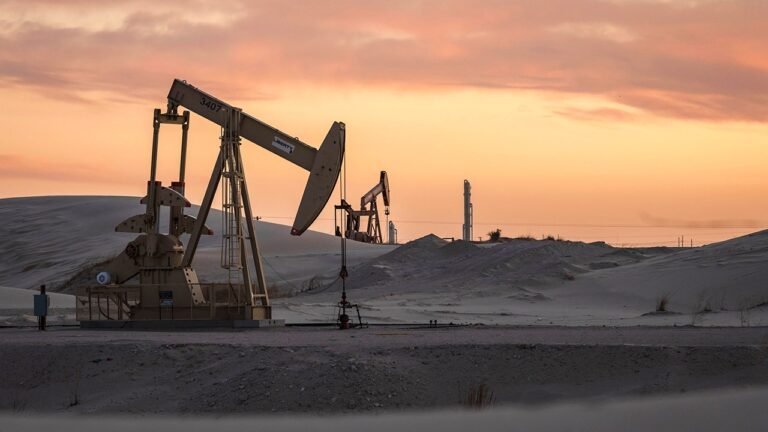Maria Bartiromo gives ‘Mornings with Maria’ viewers an inside look at the Permian Basin — the beating heart of America’s oil and gas revival — as President Donald Trump’s policies drive a powerful new era of U.S. energy independence.
The pipes are churning, and sand and water are flowing once again as America’s oil executives focus on increasing domestic supply and aim to bring prices to a “low point” in 2026.
“We’re prepared for prices in ’26 to be lower than they were in ’25,” Chevron CEO Mike Wirth said in an interview with FOX Business’ Maria Bartiromo — the first of four exclusive segments airing on “Mornings with Maria” this week — offering an in-depth look at operations in Texas’ Permian Basin.
“That’s the current outlook. As we get on the other side of that and that supply’s back in the market, the market will come back into balance and I think we’ll see prices restored to a level a little bit higher, and ’26 may be a low point,” Wirth said.
“Economics drive capital allocation decisions. Today, oil’s at $57 a barrel. I don’t think we’re necessarily high-fiving with that oil price, but again, we’re going to find ways to reduce costs, cut our emissions, and make our break-evens lower to live to fight another day,” Diamondback Energy CEO Kaes Van’t Hof also told Bartiromo.
CHEVRON CEO APPLAUDS TRUMP ADMINISTRATION’S ENERGY POLICY SHIFT DURING PERMIAN BASIN TOUR
During her tour in Midland, Texas, Bartiromo noted that the Permian Basin is the largest secure oil supply in the world, currently accounting for about 40% of U.S. production — a figure projected to reach 70% by 2040.
The Permian Basin, a sprawling shale patch that lies beneath Texas and New Mexico, is North America’s most prolific shale patch. (Getty Images)
As of Monday morning, oil prices edged lower — down more than 1% before the market opened. The dip followed reports that U.S. and Chinese officials reached a “substantial framework” to avoid 100% tariffs, a move expected to boost oil demand, according to Reuters.
“If you go back just 20 years ago, the U.S. was the third-largest producer in the world. Saudi Arabia and Russia were larger, and at that time, if you combine Saudi Arabia’s and Russia’s oil and gas production, it was three times what the U.S. produced. Today, production in the U.S. of oil and gas is larger than Saudi Arabia and Russia combined,” Wirth said.
“That’s why the Permian Basin is so amazing. It’s been producing for over 100 years and left for dead two or three times, and here we are now producing over 6 million barrels a day, which on its own would be the third-largest oil-producing country in the world,” Van’t Hof added. “And all that’s within, essentially, a 150-mile radius of where we are today.”
‘Sunday Morning Futures’ host Maria Bartiromo offers a preview of her exclusive tour of the Permian Basin and interview with Chevron CEO Mike Wirth, examining how energy strength is linked to economic competitiveness.
Wirth, along with Chevron Shale and Tight Vice President Kim McHugh, noted that America’s vast energy resources are not just an economic advantage – but also a matter of national defense by insulating itself from oil adversaries like Russia and Iran.
“I’m a second-generation driller. I grew up around it,” McHugh said. “My husband’s in the industry. My daughters are in the industry. I believe in what we do. This is a noble cause people need. We make people’s lives better by what we do.”
“Energy security and national security are linked. The U.S. is blessed with an abundance of natural resources, and we now have an administration that wants to see the energy industry invest in those resources to make sure that America’s energy strength translates into economic strength and competitiveness and, importantly, security,” Wirth said.
GET FOX BUSINESS ON THE GO BY CLICKING HERE
Continental Resources founder and Chairman Harold Hamm discusses President Donald Trump’s plan to buy 1 million barrels of oil for the Strategic Petroleum Reserve on ‘Mornings with Maria.’
Last week, fellow oil executive Harold Hamm warned that global oil demand could soon outpace affordable supply.
“With about 18 months, that oversupply’s going to be gone. And then we need to watch out for some price shocks after that point. Once you exceed demand with supply, that’s when those things start happening,” the business leader warned. “So we have to have an energy industry in this country. Energy independence is so important to us.”




